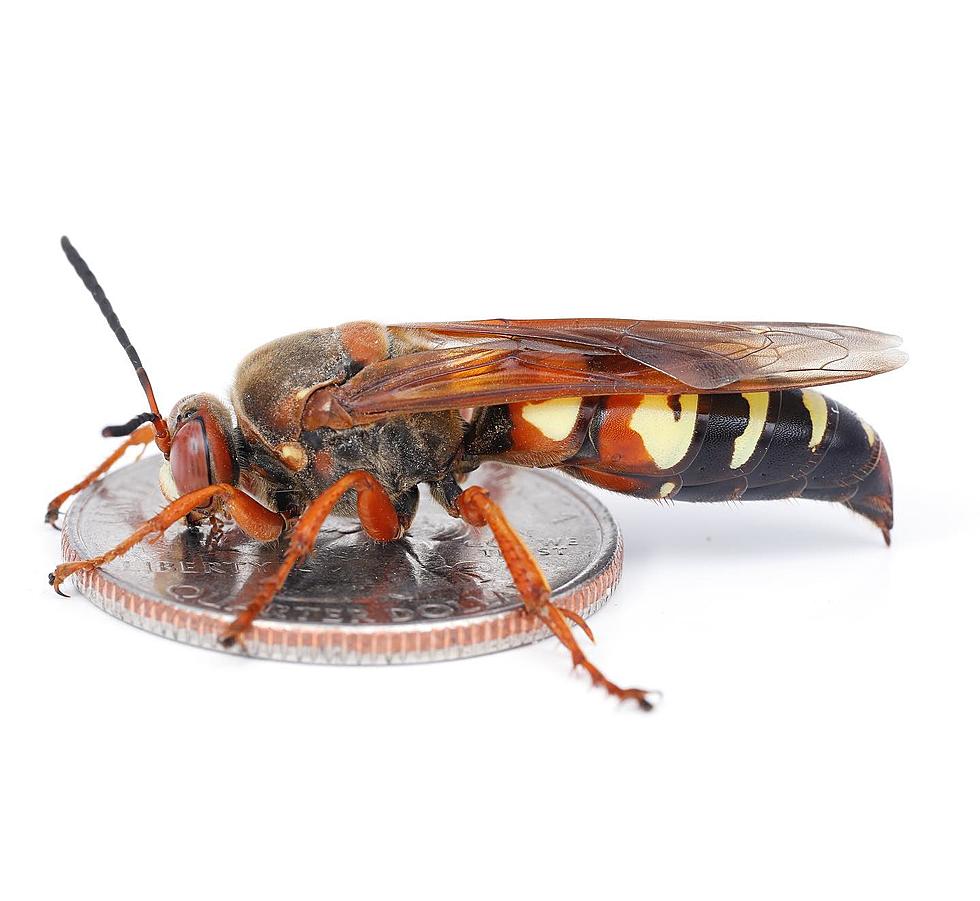
Cicadas Are Going To Invade Illinois, So Are Cicada Killer Wasps
In the next month or so, it appears as though you're going to have to ask yourself a question: Am I more freaked out by billions and billions of screeching cicadas hanging around on every tree, bush, and blade of grass, or, am I more freaked out by really big wasps that look a lot like...murder hornets.
It really doesn't matter which option you chose, you're going to have plenty of both once the huge emergence of cicadas in Illinois starts happening in May. With billions, and maybe even a trillion cicadas out and about, there are going to be lots of cicada killers, too.
Before those who have a wasp-phobia get too worked up over this, read on to learn why the cicada killer wasp shouldn't freak you out as much as they probably will.
There's No Getting Around It, These Cicada Killer Wasps Are Big, In Some Cases As Large As "Murder Hornets"
As I mentioned earlier, they're so big that many people confuse them with a much-less benevolent type of wasp known as the "murder hornet," or Asian Giant Hornet, Japanese Hornet, Yak-Killer Hornet, or Giant Sparrow Bee. Whatever you want to call these things, they can and do kill people and wildlife. In Japan alone, murder hornets kill about 50 people a year.
The most recent death caused by murder hornets happened about a week ago in Portugal, where a man was attacked and killed by them while he was picking fruit.
Take some relief in knowing that cicada killer wasps don't do anything like that. To people and animals, anyway. They save the nasty stuff for their prey, the cicada.
Look At It This Way, The Cicada Killer Wasps Are Just Helping Us Out By Getting Rid Of Those Noisy, Pee-Squirting Cicadas
As big as they are (female cicada killers can be up to 2 inches long), only the females have stingers, and they really don't want to use them on you. About the only way to get stung by a non-aggressive cicada killer wasp is to step on one while you're barefoot or foolishly trying to hold one in your hand.
Cicada killer wasps will dig their burrows on the edges of yards, in flower beds, or along sidewalks, patios and driveways. The female cicada killer wasp will inject venom via sting into a cicada to immobilize it, then pick it up and deposit it in the burrow after laying eggs on it. Newborn cicada killer wasps then feed on the still-alive cicadas in the burrow.
LOOK: 20 of the biggest insects in the world
Gallery Credit: Andrea Vale
Quiz: Do you know your state insect?
Gallery Credit: Andrew Vale
More From WROK 1440 AM / 96.1 FM









